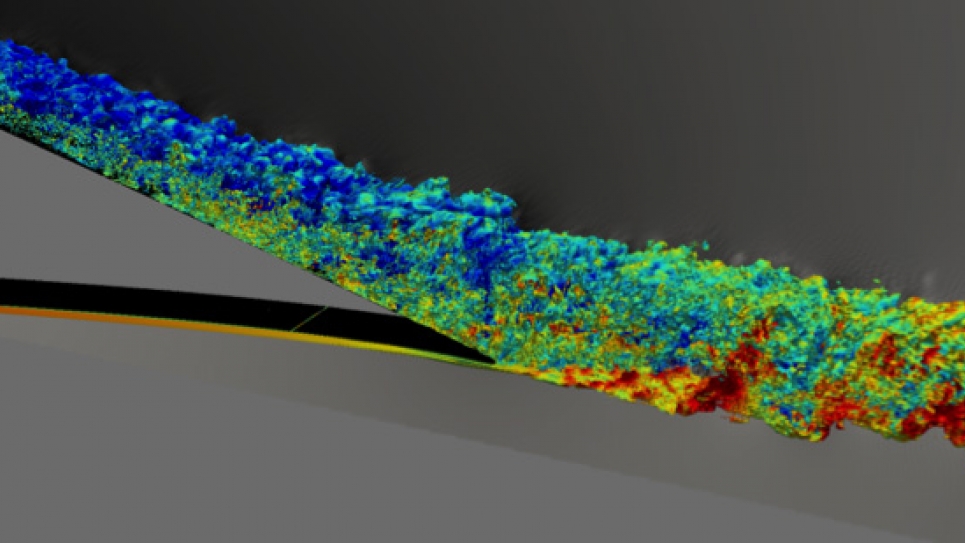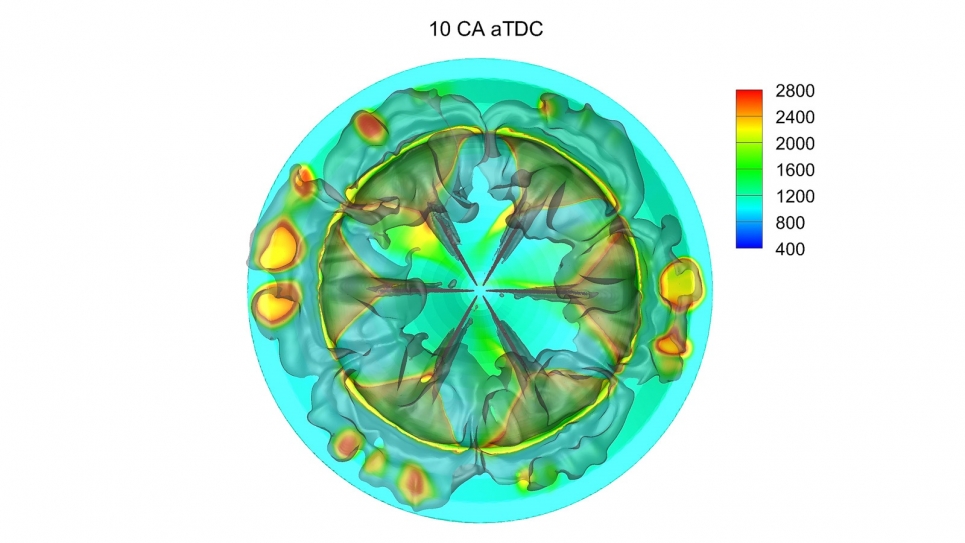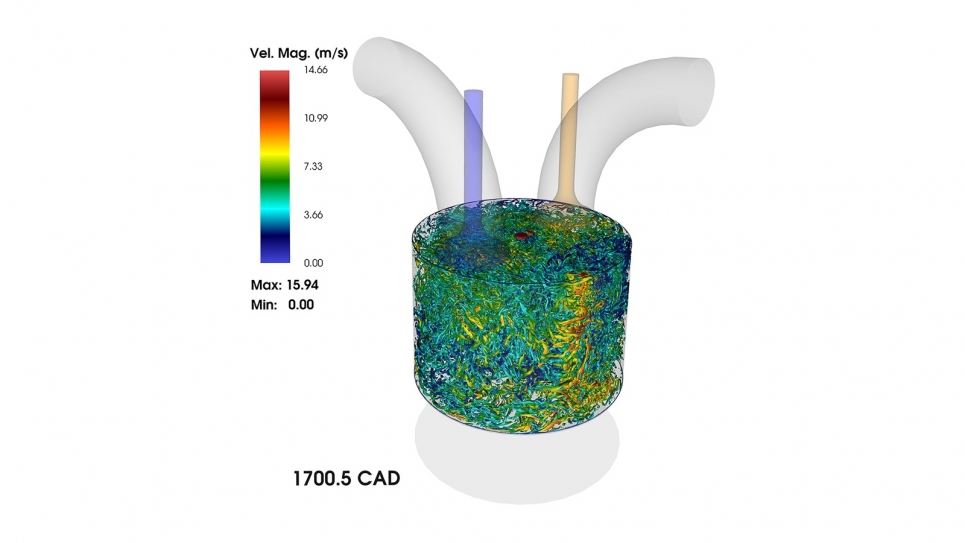
GE researchers perform simulations in pursuit of more efficient jet engines and wind turbines
The recent addition of a new runway and changes in flight patterns at Chicago’s O’Hare International Airport raised the ire of residents affected by the increased noise of jet engines overhead. The city took action to appease residents by offering to help soundproof their homes, and legislation is underway to expand those measures.
And from Oregon to Maine, residents and policymakers have argued the harmful impact of the low-frequency thrum created by wind turbines, threatening legislation to impede the growth of the wind energy industry.
But what if, rather than alter homes against jet engine noise pollution or halt a promising energy alternative, jet propulsion and wind turbine systems were altered to reduce noise at the source?
A GE Global Research team, under the leadership of Umesh Paliath and Giridhar Jothiprasad, did just that by studying the complex behavior of air as it passes through jet exhaust nozzles and over wind turbine blades.
Utilizing the Argonne Leadership Computing Facility’s (ALCF) high-performance computers, the GE team relied on large eddy simulations (LES) to understand and predict these turbulent flow features, measuring quantities such as velocity, temperature and pressure. Information derived from these simulations, notes Paliath, is key to developing quieter, more efficient wind turbines and jet engines.
Turbulent flow from exhaust nozzles and around wind turbine blades contains unsteady vortices of many scales that interact with each other over a large range of time scales. GE Global Research leveraged LES to accurately characterize some of the key flow physics of this multi-scale turbulent mixing phenomenon that occurs in real industrial applications.
Where it once took two to three months to get the level of predictions for which Paliath’s team is striving, now takes only one to two weeks given the power and precision of ALCF’s 10-petaflops supercomputer, Mira, an IBM Blue Gene/Q. “These are what we call high-fidelity LES, which are very accurate. You are directly predicting the jet engine noise, without modeling the turbulent flow noise sources as in a traditional RANS (Reynolds Averaged Navier Stokes) approach,” he says.
This approach has already accurately predicted the acoustic signatures from complex jet exhaust nozzles with noise-control devices, such as chevrons and lobed mixers. Unlike experiments, the virtual, or numerical, wind tunnel created through LES allows for simultaneous measurement of all relevant turbulent quantities to reconstruct higher-order turbulence statistics. This enables researchers to better understand the effect a specific exhaust nozzle-shape has on noise generation and propagation. The datasets are also used to improve assumptions in current reduced-order acoustic models, which are the design tools of choice due to fast turnaround times.
GE researchers are using similar LES-based approaches to better predict the noise and aerodynamics of the flow around wind-turbine airfoils at various incoming flow conditions.
As the size of the turbines increases and cost-reduction programs encourage lighter, more flexible structures, the ability to make accurate predictions for advanced blade design has become increasingly important. But addressing key issues such as noise source and flow field variations comes at a cost. Resolving the wall bounded turbulent flow around a wind turbine airfoil is computationally more expensive than simulations involving jet mixing as in jet engine exhaust.
And where the solving prowess of Mira’s predecessor, the IBM Blue Gene/P, Intrepid, worked for some issues, the GE team is counting on the more powerful Blue Gene/Q to meet the challenges of installed jets and wind technology.
In addition to its supercomputing facility, ALCF is contributing its considerable data expertise to GE’s research. Using GE’s flow data, ALCF collaborators have developed flow visualizations that will allow researchers to probe deeper into flow field constructs for both wind and jet, as well as reduce the large LES data sets into meaningful numbers.
Together, the GE Global Research team and ALCF are applying this new data toward improving old noise prediction models. The LES approach is already impacting evaluation of new designs that may help revitalize a wavering alternative energy market, and improve engine efficiency in an extremely competitive global market.



